Cherryville’s Blossoms: Spring in Full Swing!
By: Grace Smith – Wise News Network
CHERRYVILLE, NC (WNN) – It is no secret that Cherryville is known as the city “where life blossoms.” This time of year it does exactly that. From the cherry trees scattered around to the creeping phlox clustered on the ground, Cherryville is nearly in bloom.
On April 5, 2024, the sun’s warmth has coaxed flowers to bloom since mid-March. There are many species to admire, but little time to do so. In North Carolina, peak blooming season occurs in mid-April.
For avid flower enthusiasts, admirers of natural beauty and everyday Cherryville residents, here is a guide to many of Cherryville’s flowers.
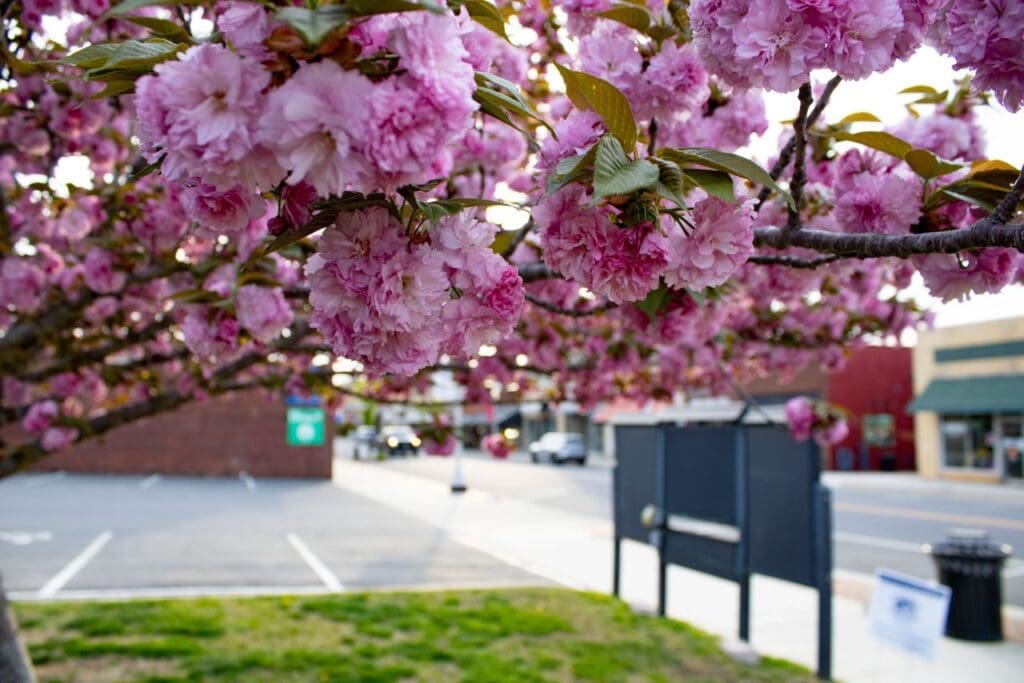
Cherry Blossoms
Cherryville owes its name to the cherry trees that lined its railways during the White Pines settlement days. Modern Cherryville boasts cherry trees adorned with flowers rather than fruit.
Thanks to the recent efforts of resident Sid Stroupe, Kwanzan cherry tree saplings, renowned for their pink blooms and sweet fragrance, were planted around the city.
Over the years, numerous efforts to reintroduce these flowers to Cherryville have been hindered by their susceptibility to disease. Cherry trees require maintenance to keep them healthy. They also attract bugs that can cause damage to the trees.
However, the recent saplings have been in the ground since January with no signs of damage.
Originating from Southeast Asia, cherry blossoms typically bloom for one to two weeks, with North Carolina’s cherry trees beginning to blossom from mid-March to early April. Once in full bloom, spectators have about a week and a half to admire them before they start to fade.
Cherry trees are favored by pollinators, especially various bee species, adding to their appeal in the local ecosystem.

Wisteria
Wisteria is known for its twining vines and violet clusters of flowers. It is a resilient species that thrives in poor soil conditions. Belonging to the legume family, its seeds contribute to its hardiness, making it a versatile plant capable of adapting.
With varieties native to both Asia and North America, wisteria can thrive in many environments. It is native to coastal regions of North Carolina, however, wisteria sprawls throughout the Piedmont as well.
In addition to its adaptability, wisteria serves as a valuable resource for pollinators, such as bees and butterflies.
However, pollinators are not the only creatures attracted to its sweet scent. Wisteria is not only known for its purple blooms but also its delicious scent. As it grows in clusters, the scent of wisteria is quite strong, filling the spring air with floral notes.
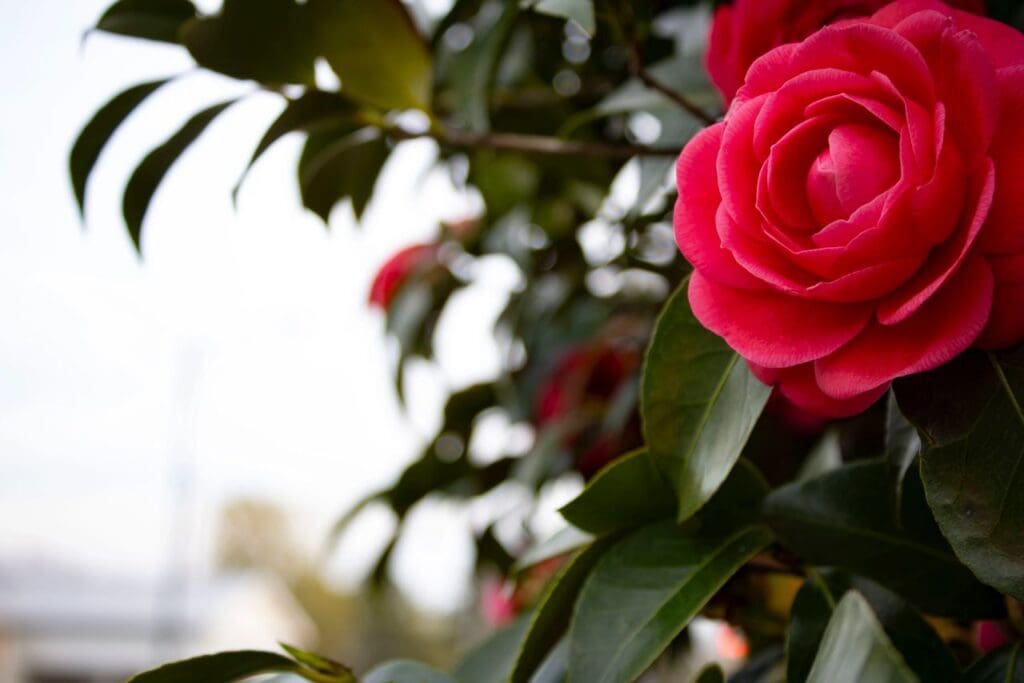
Camellias
This popular flower is known for its colorful varieties. The spectrum ranges from yellow to purple, however, pink and white are the most common.
Camellias belong to the tea family. The flower’s leaves and petals are commonly found in teas around the world. These flowers are primarily native to Eastern and Southern Asia, however, North Carolina is known for one variety: mountain camellias.
Mountain camellias are white flowers that are found on trees. They are native to the mountainous and piedmont regions of North Carolina and can be identified by their circular petals and yellow centers.
Camellias attract many kinds of pollinators, however hummingbirds and butterflies particularly find its sweet nectar enticing.
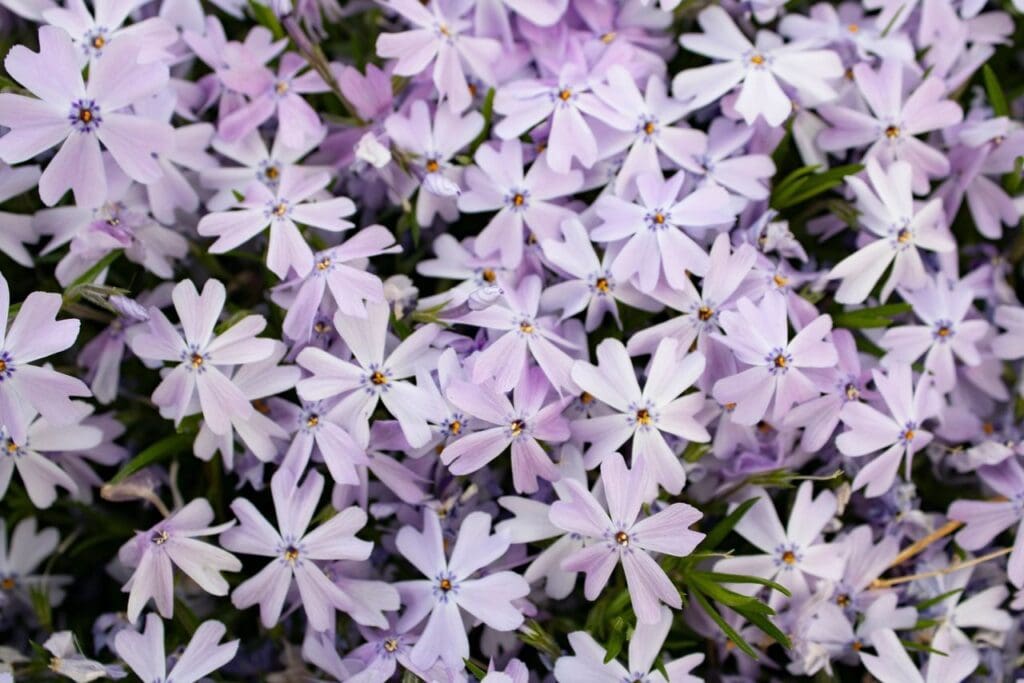
Creeping Phlox
Native to North America, phlox is a versatile and resilient plant species that adds beauty to landscapes across the continent. Among its varieties, creeping phlox stands “moss pink” because it thrives in similar environments to moss and can appear moss-like from afar.
It grows in sandy or rocky soil and demonstrates its adaptability to diverse environments. This makes it a popular choice for gardens and natural landscapes alike. Additionally, creeping phlox attracts bees and hummingbirds, another attractive attribute to gardening enthusiasts.
A fun fact about phlox flowers is that every variety is native to North America except one, which is found in Siberia.
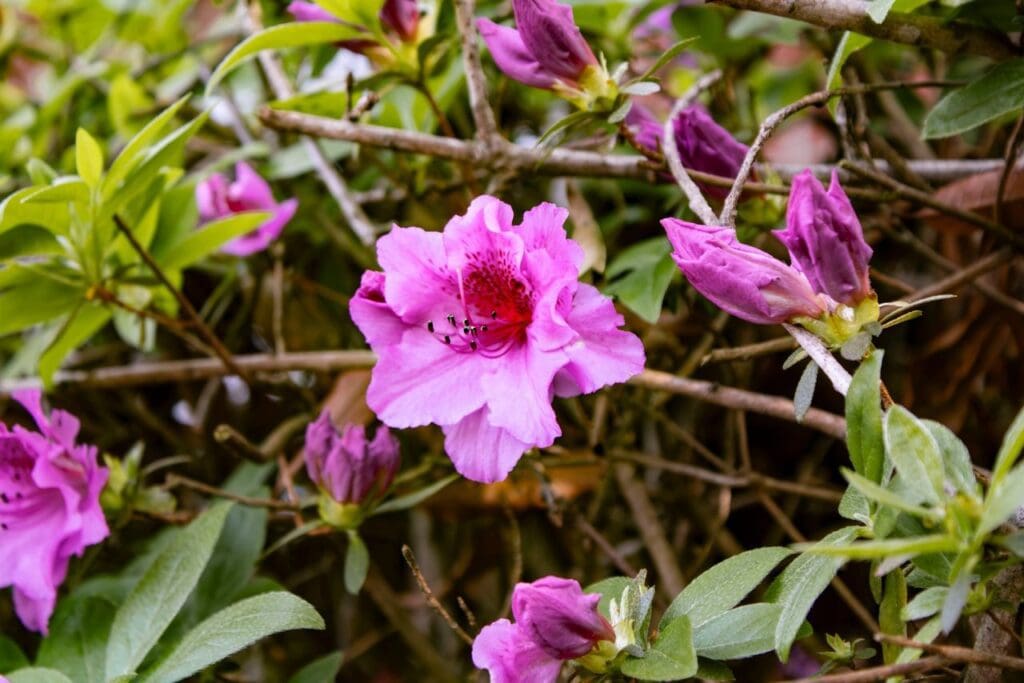
Azaleas
Azaleas, belonging to the rhododendron species, are renowned for their exquisite beauty and diverse array of varieties. Native to the hilly regions of both Asia and North America, these ornamental flowers add a splash of color to gardens worldwide. Some varieties are native to North Carolina.
Their most common hues are pink and white, with the deep coloration making them a popular choice for gardens and decorative plantings. Although classified in the blueberry family, azaleas are not edible to humans. However, butterflies find them delicious.
Butterflies play a crucial role as pollinators because azaleas are cone-shaped flowers that rely on the winged insect to transfer pollen between blossoms. The fluttering of their wings facilitates the transfer of pollen, making it easier for fertilization to occur.
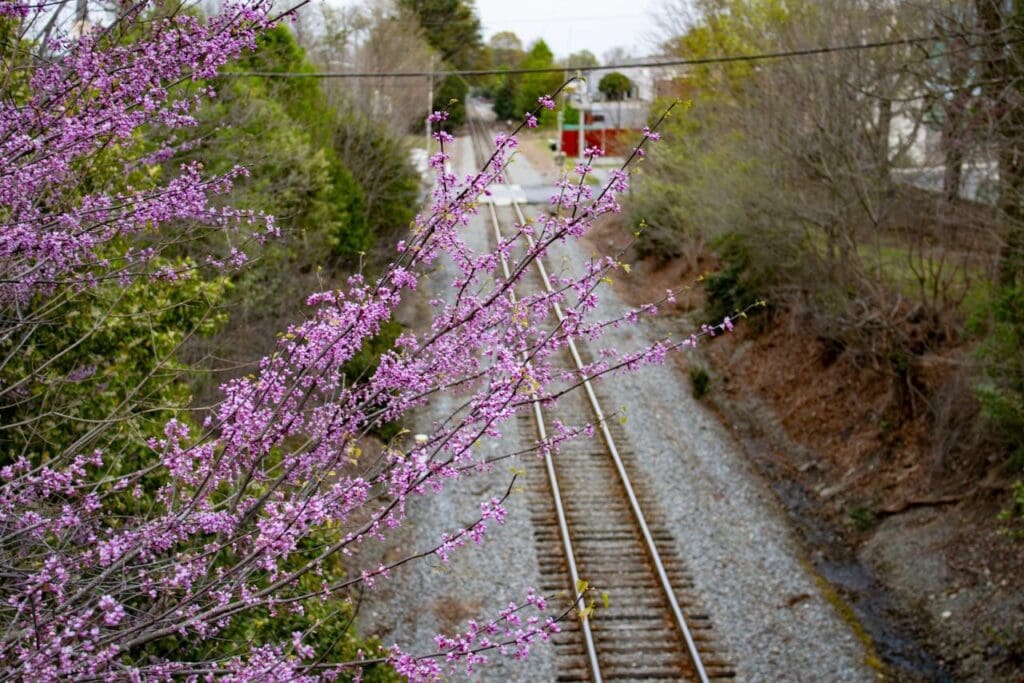
Judas Trees
The redbud tree, native to regions of North America, South Europe, and Asia, is commonly referred to as the Judas Tree due to its association with the betrayer of Christ.
Legend has it that Judas hanged himself on a redbud tree, lending spiritual significance to these plants. The clusters of dark pink flowers are said to have acquired their hue from Judas’s blood.
The spiritual lore surrounding Judas Trees is enhanced by their historical presence in regions associated with Jesus’s life.
Judas Trees also play an important role in the ecosystem by attracting pollinators such as bee species and moths with their vibrant blooms.
A great way for Cherryville locals to observe Judas Trees is by driving down the interstate, where their purple and pink blooms cover the forests.
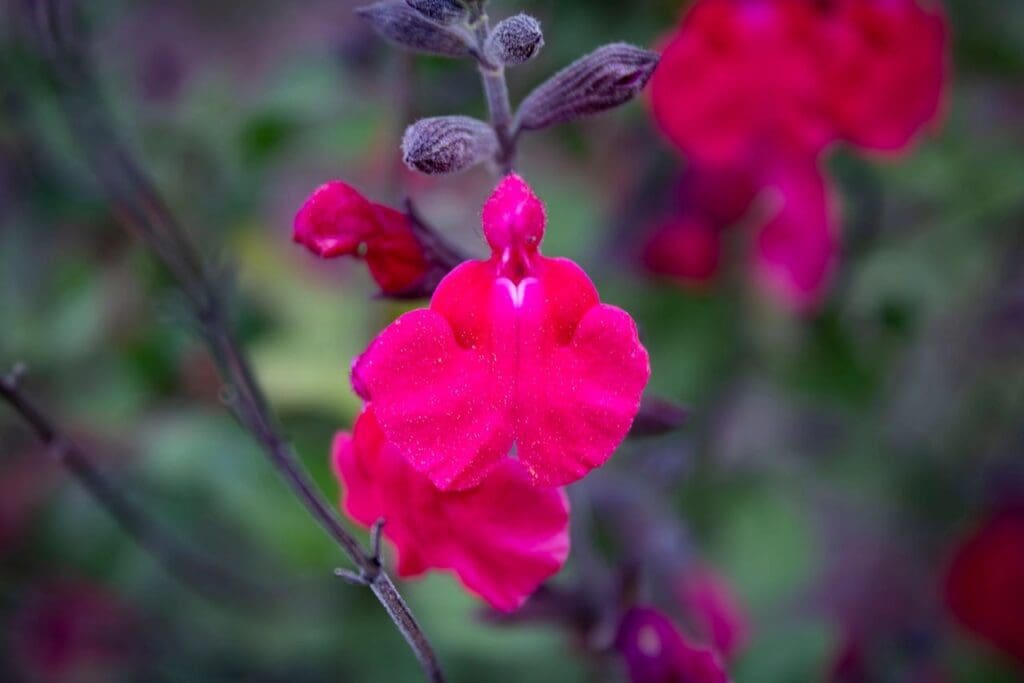
Baby Sage
An edible variety of flowers, baby sage is a resilient plant species that thrives in direct sunlight. It is an ideal addition to gardens bathed in sunlight throughout the day.
Known for its versatile blooming pattern, baby sage blooms both in the spring and fall, providing consistent beauty throughout the growing season. Beyond its ornamental value, its leaves can be harvested and used to brew tea, adding a delightful floral flavor to beverages.
Bees, butterflies, and hummingbirds are among the many winged visitors attracted to these blossoms.
While native to regions like Arizona and the mountainous areas of Mexico, baby sage varieties can be found growing in gardens across various climates and environments, a testament to its adaptability and widespread appeal.
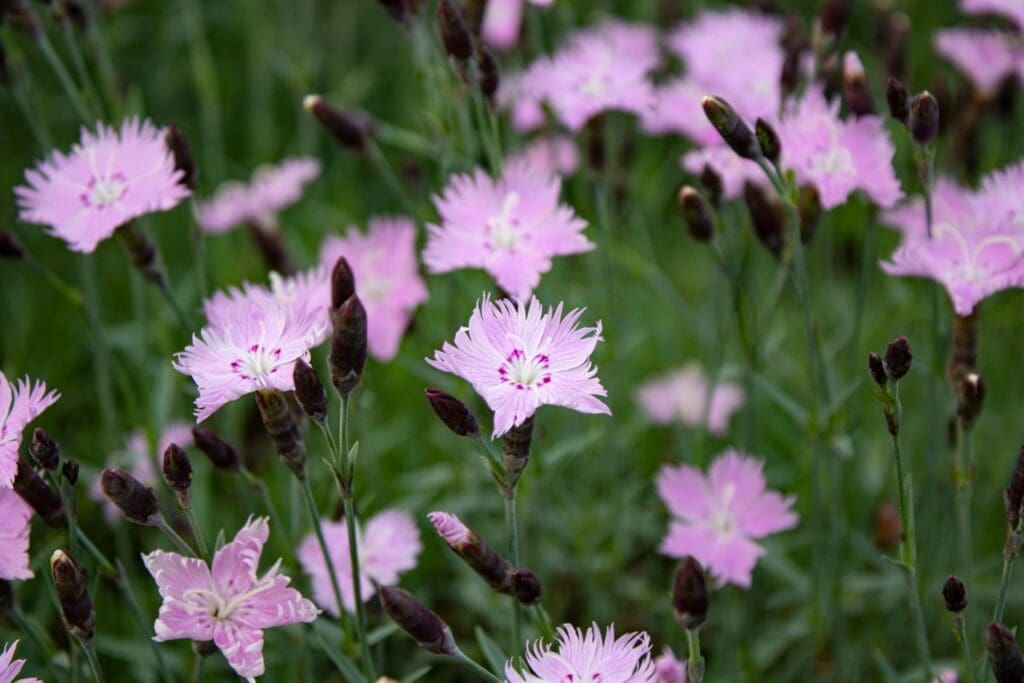
Cheddar Pink
Cheddar pinks are a variety of caryophyllaceae, also known as “the pink family” Particularly, the cheddar pinks are native to the Cheddar Gorge in England, a rocky and mountainous region of the United Kingdom.
These flowers grow in rocky soil, making some regions of N.C. the perfect environment for them to thrive. They are popular among garden enthusiasts because of their bright pink hues. Additionally, bees, butterflies and moths find them particularly attractive as well.
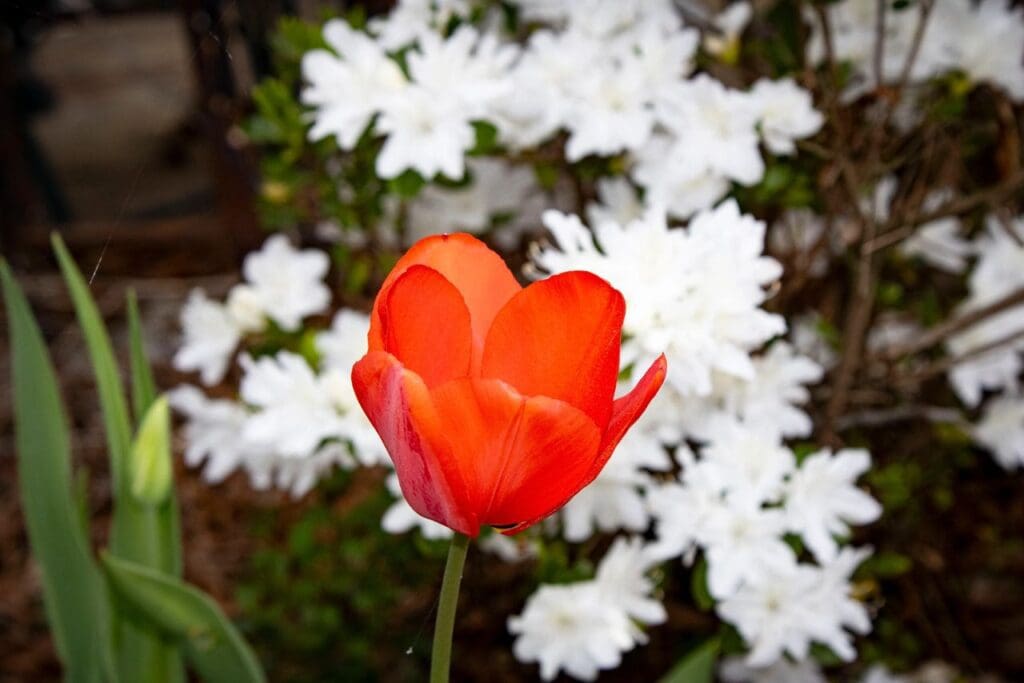
Tulips
Although they are not native to this region of the world, tulips are quite popular. They are the third most popular favorite flower, according to Bloomsybox.com, and for good reason. Tulips come in nearly 100 different varieties and colors.
They are members of the lily family and they remain in bloom for nearly a month. Tulips start to bloom in early spring, making now the perfect time of year to witness their beauty. In particular, bees and hoverflies prefer tulips, as they are small enough to enter the flowers.
Tulips are native to Central Asia and Turkey, but they have become synonymous with Holland. The Netherlands is one of the most popular destinations to travel to to see tulips in bloom. However, N.C. also has some incredible tulip farms.
Raising Grayce Farm in Greenville, N.C., has rows upon rows of colorful tulips. It’s not the Netherlands, but you do not need a passport to immerse yourself in the beauty of tulips.
WNN reached out to botanists in the region, but unfortunately, no responses were received by the time of publication for this article.
The information for this article was retrieved from the Farmer’s Almanac, Britannica and the North Carolina Extension Gardner Plant Toolbox. Links to all the sources can be found below.
Every year, Cherryville lives up to its reputation as the city blossoms with life.
Peak blooming season is nearly upon the region and life is stirring all around. Whether it’s the symbolic cherry blossoms or the aromatic wisteria, there’s something for everyone to admire and appreciate in Cherryville’s blooming landscape.
Sources:
1. “Tulip.” Encyclopedia Britannica. URL: https://www.britannica.com/plant/tulip
2. “Most Popular Flowers.” BloomsyBox. URL: https://www.bloomsybox.com/blog/posts/most-popular-flowers
3. “Dianthus gratianopolitanus.” North Carolina State University Extension Gardener Plant Toolbox. URL: https://plants.ces.ncsu.edu/plants/dianthus-gratianopolitanus/
4. “Salvia microphylla.” North Carolina State University Extension Gardener Plant Toolbox. URL: https://plants.ces.ncsu.edu/plants/salvia-microphylla/
5. “Redbud.” Encyclopedia Britannica. URL: https://www.britannica.com/plant/redbud#ref14681
6. “Azalea.” Encyclopedia Britannica. URL: https://www.britannica.com/plant/azalea
7. “Moss Pink.” Encyclopedia Britannica. URL: https://www.britannica.com/plant/moss-pink
8. “Camellia.” Encyclopedia Britannica. URL: https://www.britannica.com/plant/Camellia
9. “Wisteria.” Encyclopedia Britannica. URL: https://www.britannica.com/plant/Wisteria
10. “Cherry Blossom Trees.” Farmers’ Almanac. URL: https://www.farmersalmanac.com/cherry-blossom-trees
For more WNN video news stories, visit YouTube: https://www.youtube.com/@wisenewsnetwork
For more WNN articles and news stories, visit: https://wisenewsnetwork.com
Contact WNN at [email protected]
Copyright 2024 Wise News Network. All rights reserved.
